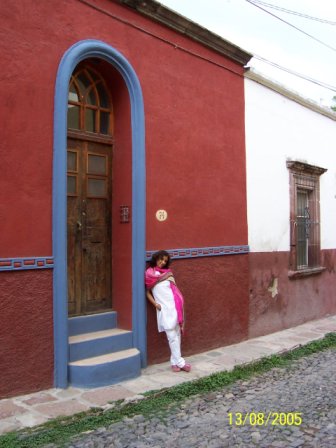This is a good year for Indian arts! Earlier this year, Aravind Adiga’s “White Tiger” won the Booker Prize. And last night, Slumdog Millionaire bagged four Golden Globes. The winners of these prestigious awards are undoubtedly Aravind Adiga, Danny Boyle, A.R Rahman and others who made these pieces of art possible. But I think it is important to note that some of the light of victory also shines on the people that these stories are based on. The chauffeur in White Tiger, the children and slum-dwellers in Slumdog Millionaire are representative of millions and millions of Indians. They are largely invisible to India’s elite who are ecstatic about the recent 7-8 percent economic growth rates, the opening of Indian markets and the emergence of India as an international destination for certain types of business. They are also largely invisible to the global elite who are vociferously commenting on India’s recent economic performance. The chauffeur and the slum-dwellers however, inhabit a different India. For them, the world is not flat. It is hierarchical. They are at the bottom of this hierarchy. They live outside of air-conditioning, outside the functioning system of the law, and outside of the understanding of the middle and upper-classes. Their stories of joy and sorrow and their dreams of escaping and securing a better life lie outside the understanding or the imagination of the so-called "mainstream" Indian society.
Amongst other themes, White Tiger and Slumdog Millionaire are stories of the escape from poverty. They are tales of the experiences of determined individuals who follow unique paths to climb the ladder of Indian society. In White Tiger, the strategy of escape is crime. A chauffeur kills his master, and takes his money (don’t worry Aravind tells you that at the beginning of the book, so I haven’t spoiled it for you). In Slumdog Millionaire, the strategy of escape is participation in a TV show. Both stories highlight the differences in the experience of the law for the rich and poor. Both stories highlight the successes of Indian democracy, but also illustrate that some are left outside of its folds. Both stories acknowledge the growing economic opportunities, raise alarms about growing economic disparities and simultaneously illustrate that for some, the unique combination of luck, determination and even criminal action can get them to a better place.
It is of course wonderful that the success of forms of art like White Tiger and Slumdog Millionaire bring international recognition to some very talented people. But the most wonderful thing of all is that people everywhere may just look at the world around them a little differently. In India, people may look at children from the slums in a whole new way and may regard their chauffeurs, servants and maids in a whole new way. Outside of India, everyday conversations about India will (hopefully) shift away from loving Indian food, experiences of customer service and the great experiences of colorful Indian weddings. Thank you Aravind Adiga, and Thank you Danny Boyle!
Monday, January 12, 2009
Subscribe to:
Posts (Atom)
